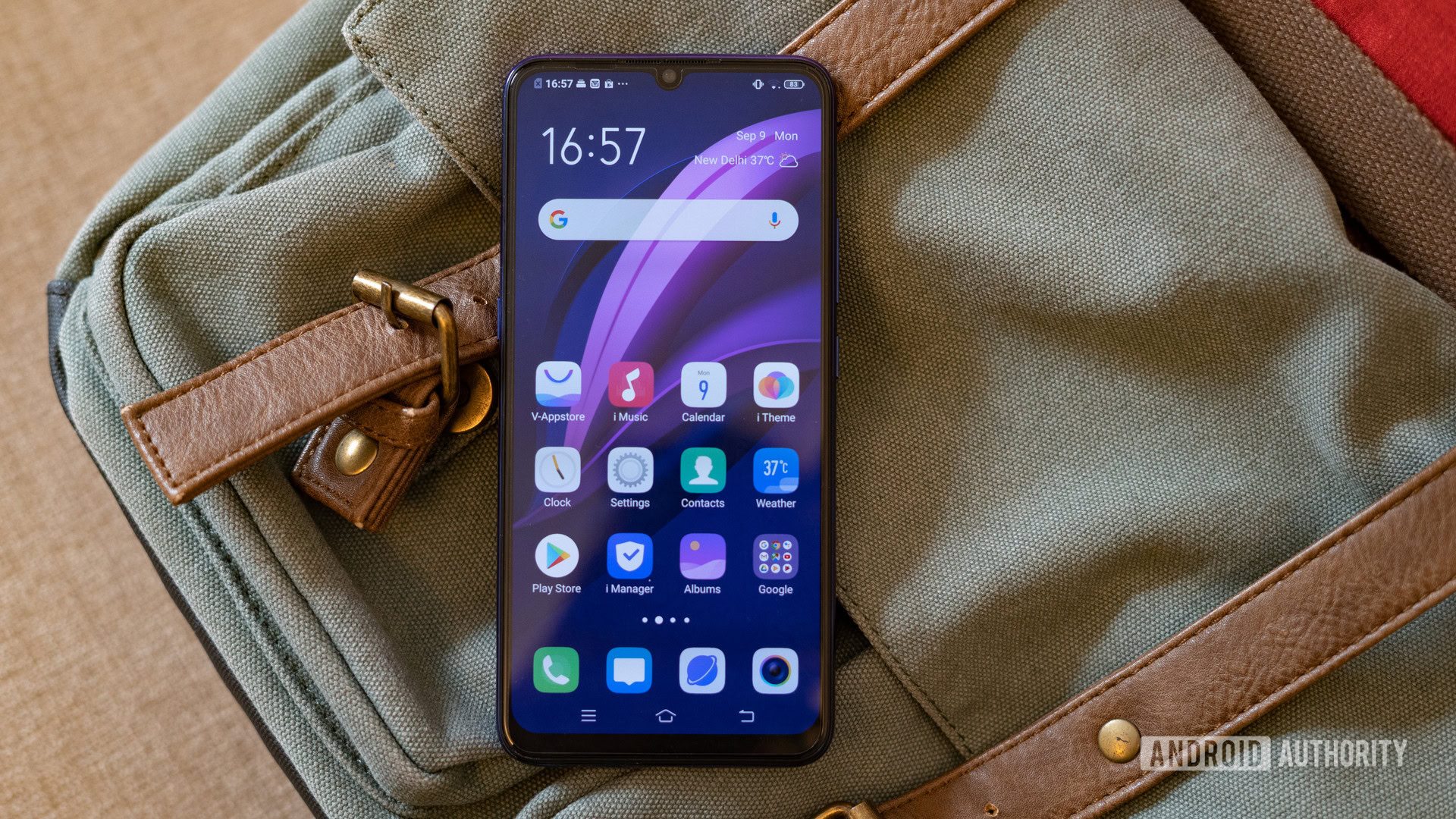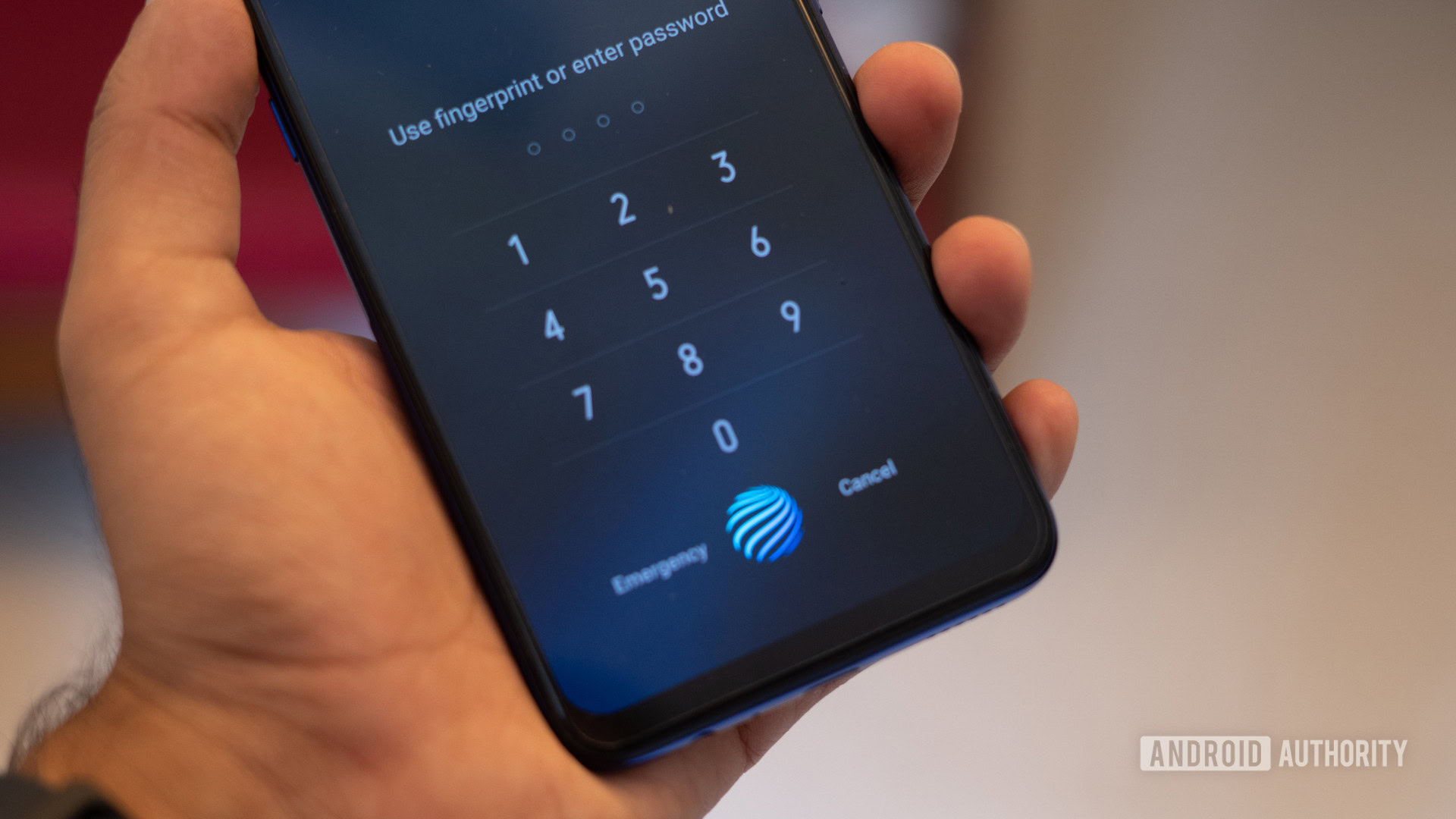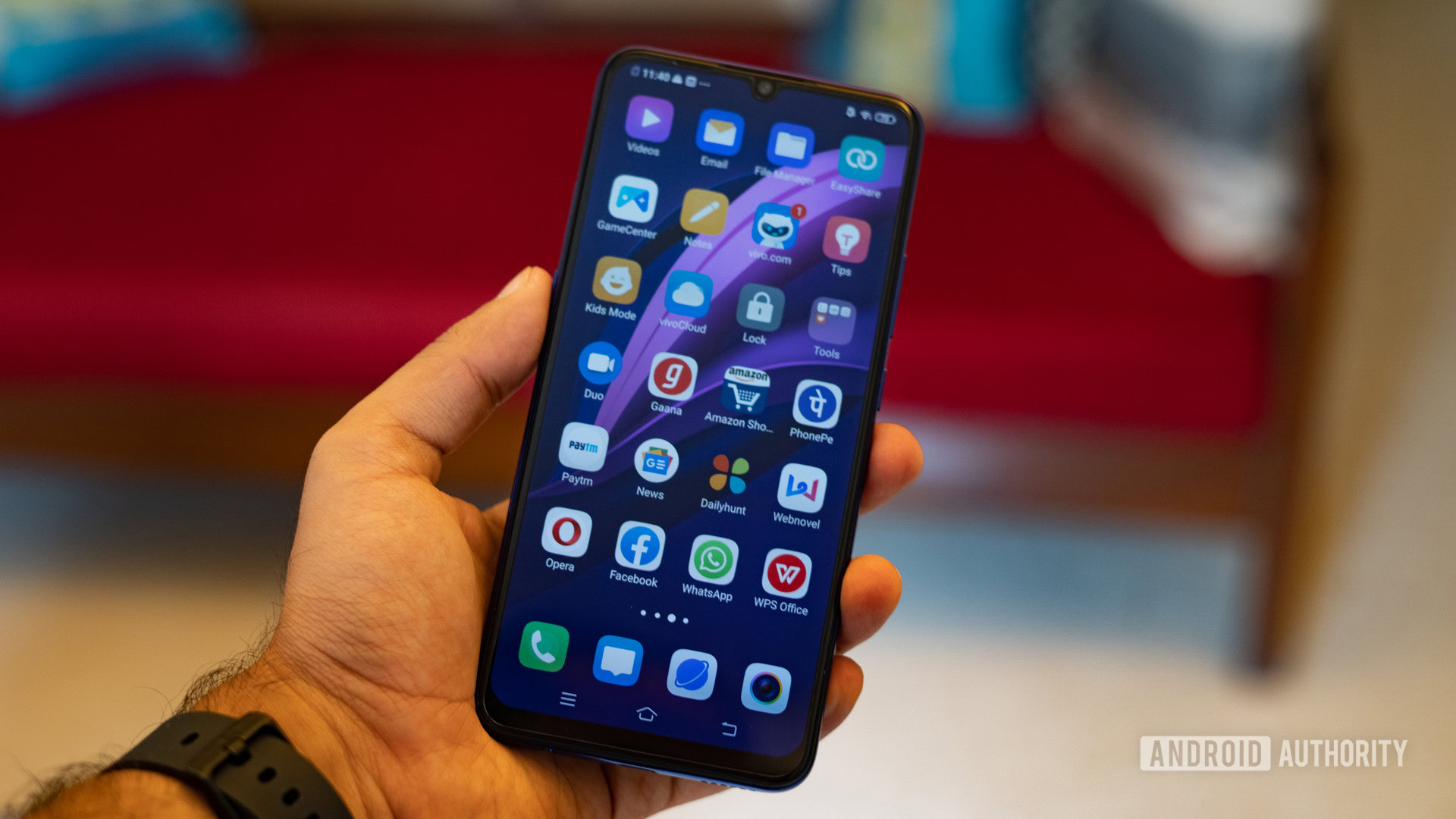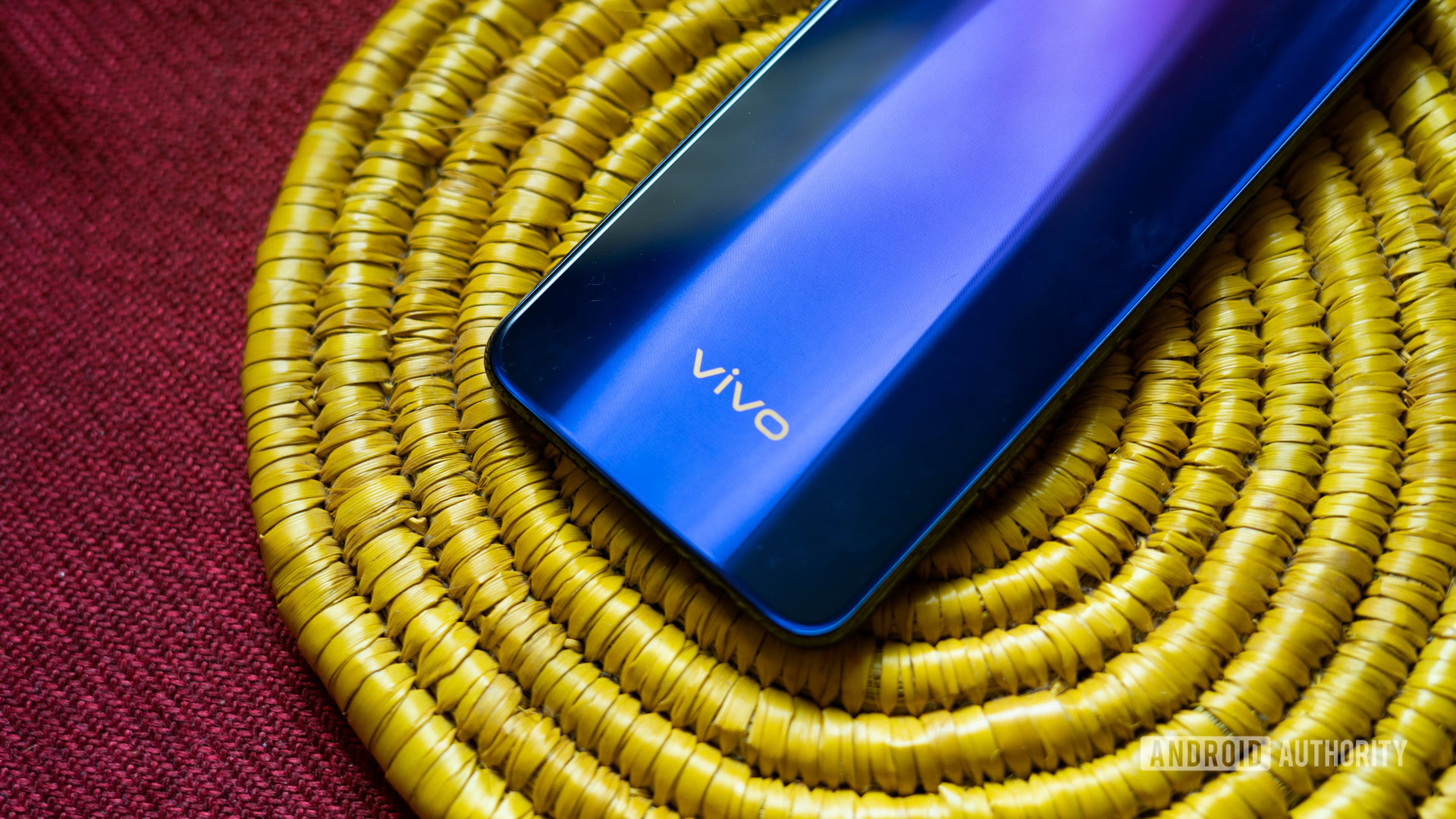Affiliate links on Android Authority may earn us a commission. Learn more.

vivo Z1x review: Attractive design and good-enough specs
September 14, 2019
Vivo Z1x
What we like
What we don't like
Our scores
Vivo Z1x
The pace of smartphone innovation is such that we’re seeing apparent successors to newly launched devices within a matter of weeks, rather than months. The vivo Z1 Pro launched in July and we praised it for having a laser focus on good design, photography chops, and long battery life. The vivo Z1x builds on the strengths of its predecessor and ups the ante on almost all fronts.
vivo Z1x Pro review: The big picture
The vivo Z1x takes aim at devices like the realme X, the Redmi Note 7 Pro, and a myriad of mid-range competitors from Samsung and others. It carries over the core experience of the vivo Z1 Pro and punches up the appeal by making improvements to the camera, display, and general feature set. Is that enough to make a good phone great?
We find out in the Android Authority review of the vivo Z1x.
What’s in the box
- vivo Z1x
- Charger
- USB Cable
- Warranty info
- Quick start guide
- Case
- Earphones
- SIM eject tool
The vivo Z1x ships with just about everything you could possibly need. This includes a clear case, earphones, and a pre-installed screen guard. You also get the staples like a SIM eject tool as well as warranty and quick start guides.
Design
- Waterdrop notch
- Polycarbonate build
- 159.5 x 75.2 x 8.1mm
- 190g
The vivo Z1x takes a step back from the punch-hole design of the vivo Z1 Pro. While it is a cool feature to have, the tiny waterdrop notch on the Z1x is just as inoffensive. Instead of the industry-standard Gorilla Glass protection, the Z1x ships with Schott Xensation 3D glass that vivo claims to have equivalent, if not better, standards of protection. Unsurprisingly, there’s no IP certification. The entire construction is polycarbonate with glass only at the front of the phone.

I like the changes vivo made to the construction of the Z1x. The phone doesn’t bulge out as much, and offers very good grip in the hand. The tactile feedback from the buttons is top-notch and the phone feels very well put together. The volume rocker and power button, both, are easy to reach. Meanwhile, the dedicated Google Assistant button on the left falls right under your thumb.
The biggest quality improvement, however, has to be the shift to a USB-C port. It is a small change, but there’s no legit reason why any 2019 mid-range phone should ship with a Micro-USB port. There continues to be a headphone jack, as well as a single loudspeaker on the bottom edge.

vivo made another change, as the Z1x sports an in-display fingerprint sensor. I found this to be just as fast as any other premium mid-range offering. That said, the position of the touch point was just a bit too low keeping in mind the size of the phone.

Vivo, like most other smartphone manufacturers, has been toying with gradients for a while now. The jewel-like blue on the Z1 Pro was an absolute stunner. This time around, the company opted for a just-as-pretty Phantom Purple. The back of the phone shimmers from a deep blue to a gorgeous shade of purple. It looks absolutely smashing. I’m personally not too big on gradients, but this is one phone I wouldn’t mind flaunting when out and about.
Display
- 6.38-inches
- Super AMOLED
- Schott Xensation 3D Glass
- 2,340 x 1,080
- 19.5:9
- 404 ppi
The display on the vivo Z1x is a marked improvement over the one we saw on the Z1 Pro. Much of this comes down to the change in display type. vivo’s switch to a Super AMOLED panel means saturation levels are on-point. (This was our biggest complaint with vivo’s other mid-range phone.)
The phone is generally bright enough, but a bit of legroom would've been great to have.
Peak brightness levels on the display fall just short of 400 nits which is good, but definitely not great. I had no issues with viewing the display outdoors, but having a bit more legroom to punch up the brightness would’ve been very handy.

Color tuning out of the box is less than ideal and skews towards cooler blue tones. Switching to the natural tuning setting corrects this to a large degree. There is no noticeable color shift except at extreme angles, and the display on the vivo Z1x is able to keep up with phones like the realme 5 Pro and Galaxy M30, both of which sport AMOLED panels.
Performance
- Snapdragon 712
- 2 x 2.3GHz Kryo 360 Gold
- 6 x 1.7GHz Kryo 360 Silver
- Adreno 616
- 4/6GB RAM
- 64/128GB ROM
- MicroSD expansion
The Snapdragon 700 series of chipsets have fast become the darling of mid-range smartphone manufacturers. The 712 debuted in India with the vivo Z1 Pro and the Z1x also relies on the chipset. To give you a recap, the Snapdragon 712 provides a modest bump in CPU performance over the Snapdragon 710 via higher clock speeds. There is no difference in graphics performance.
Performance is right in line with other competing mid-rangers.
Mid-range hardware generally delivers excellent results these days, and the Z1x is no different. The software and hardware work in tandem to deliver a software experience that is smooth without noticeable frame drops. If you’re not a heavy gamer, there is enough grunt under the hood here to run anything you throw at it. The phone didn’t break a sweat when jumping between apps and easily held up.
PUBG remains one of the most popular games on the platform and the vivo Z1x maintained a solid frame rate. I didn’t notice any serious pop-ins or lags. If you plan to do a bit of gaming on your phone, the vivo Z1x will present no issues at all.
Benchmark scores are within spitting distance of competing Snapdragon 712 equipped phones. The phone managed 185123 points in the AnTuTu benchmark, which is almost 3000 points more than what the realme 5 Pro managed. Similarly, in the GPU-focused 3DMark benchmark, the score was pretty much what most other Snapdragon 712-equipped devices have managed in our tests. Finally, the vivo Z1x managed 2967 points in our Basemark test.
Battery
- 4,500mAh
- 22.5W fast charging
Battery life was reasonably good but fell short of best in class, despite the large 4,500mAh battery. In our testing, the phone managed over 16 hours of video playback, but fell short of the 18/19 hours achieved by Xiaomi’s hardware with smaller batteries. The same was true of our web browsing test, where the phone managed to push through 15 hours of battery life. This was pretty good, but again, not quite as good as what some competing phones with smaller batteries are able to achieve.
Software
- Android 9 Pie
- Funtouch OS
The vivo Z1x, like other vivo phones, includes Funtouch OS with Android Pie onboard. I’m not a fan of vivo’s skin because of how far it is from the standard interface paradigm of Android.
There’s no app drawer here, but what really caught me off guard was how the notification drawer has been split up with the quick access toggles placed in a swipe up drawer at the bottom of the phone. This took a while to get used and is a bit too cluttered. Similarly, the phone is plagued by way too many pre-installed apps. This includes both third-party applications as well as redundant first-party applications. Not all of these can be removed.
The ability to set the volume key as a shortcut and the one-handed mode are handy to have.
vivo added in a few functions that power users might find handy. I particularly liked the ability to set the volume down button as a shortcut key for any application, flashlight, or the camera. Similarly, the one-handed mode works well in those instances when you need to type out a message with a single hand.
Camera
- Rear camera:
- 48MP IMX582 wide-angle, f/1.8
- 8MP ultra-wide
- 5MP depth sensor
- Front camera:
- 32MP f/2.0
- 4K/30fps video
- No EIS
As is the case with most mid-rangers, the vivo Z1x sports the 48MP IMX582 sensor that pixel-bins down to 12MP. It looks like vivo worked on tweaking the camera tuning, but it falls just short of nailing it — especially in less-than-great light.
Images generally look good enough, but close examination reveals an emphasis on boosting saturation. The dynamic range is not particularly impressive either, with the shadowy areas missing detail. Wide-angle shots displayed slightly boosted exposure levels. They were not bad looking images at all, but could do with slight tweaks.

As mentioned earlier, the saturation has been boosted, but images still look visually appealing. The phone does a good job keeping noise levels in check without creating digital artifacts.

Indoor and low-light conditions pose a problem for the phone and the noise levels definitely ramp up. I expected the phone to perform better, given the boosted sensitivity from pixel binning.
Video recording tops off at 4K at 30fps thanks to the IMX582 sensor. Video footage looks a bit too over-sharpened for my liking, with some visible compression artifacts. These become more evident as the ambient light drops and noise levels go up. Daylight footage is about par for mid-range smartphones, with punchy colors. It isn’t quite the best video capturing experience, but most users should find it good enough.
You can head on to the link to take a look at full resolution image samples.
Audio
- Headphone jack
- Single downward-firing speaker
The vivo Z1x sports a headphone jack and delivers clean, neutral-sounding audio. Wired headphones sound pretty good and there’s no hiss or aberrant noise that we’ve noticed on some mid-rangers.
The speaker keeps pace with the competition and we measured peak loudness levels of over 83 decibels. This isn’t as loud as Xiaomi’s phones, but keeps up with realme devices. Regardless, it is loud enough for alarms and even for listening to Youtube videos while out and about. Not that we recommend doing that!
Specifications
| vivo Z1x | |
|---|---|
Display | 6.38-inch Super AMOLED 2,340 x 1,080 resolution 19.5:9 ~404 ppi |
SoC | Qualcomm Snapdragon 712 2x2.3GHz Kryo 360 Gold 6x1.7GHz Kryo 360 Silver |
GPU | Adreno 616 |
RAM | 6GB |
Storage | 64/128GB Expandable with microSD card up to 256GB |
Cameras | Front camera: 32MP, f/2.0 Rear camera: 48MP, f/1.8 aperture 8MP, f/2.2 16mm ultrawide 5MP depth sensor 4K@30fps video recording, Dual-LED flash |
Battery | 4,500mAh 22.5W fast charging USB-C |
Headphone port | Yes |
Software | Android 9.0 Pie with Funtouch OS |
Dimensions and weight | 159.5 x 75.2 x 8.1mm 190g |
Price | 16,990 rupees (6GB + 64GB) 18,990 rupees (6GB + 128GB) |
Value for the money
- vivo Z1x: 6GB RAM, 64GB storage — 16,999 (~$237)
- vivo Z1x: 6GB RAM, 128GB storage – Rs. 18,999 (~$265)
Vivo’s done a great job with the Z1x. By making improvements in all the right places, it has elevated the Z1 Pro’s experience to a level that can handily hold its own against other mid-rangers. I like the display, the performance is competitive, the camera is much improved, and the design looks splendid.
Priced at Rs. 16,999 and 18,999 for the 64GB and 128GB variants, the vivo Z1x is in the same pricing ballpark as the competition. The phone goes up against devices like the realme X and Redmi Note 7 Pro. Both competing phones deliver great performance and imaging, but the Z1x’s design pulls ahead just a bit. However, vivo’s software experience is a definite step down that takes away from the user experience. Low light imaging too, leaves a lot to be desired.
vivo Z1x review: The verdict

If design is a big consideration for you, the vivo Z1x is an excellent mid-range option. It doesn’t necessarily break new ground, but for fans of vivo’s take on Android and the gorgeous purple finish, the Z1x is a very good phone without any major drawbacks. What are your thoughts on the vivo Z1x? Does it bring enough to the table to stand up against the excellent mid-range options available? Let us know in the comments.